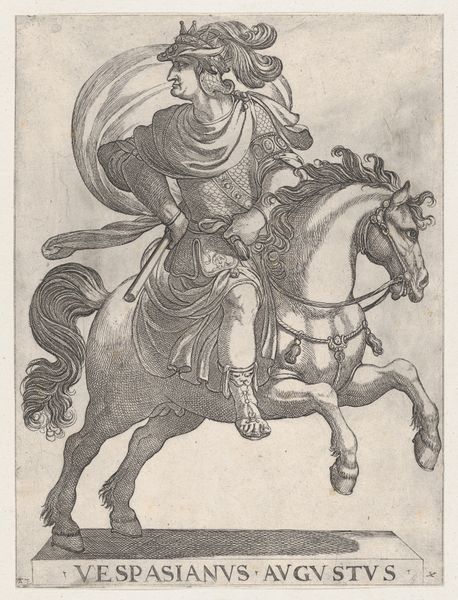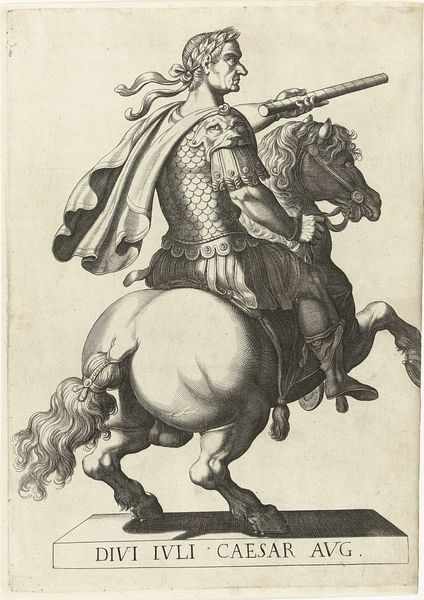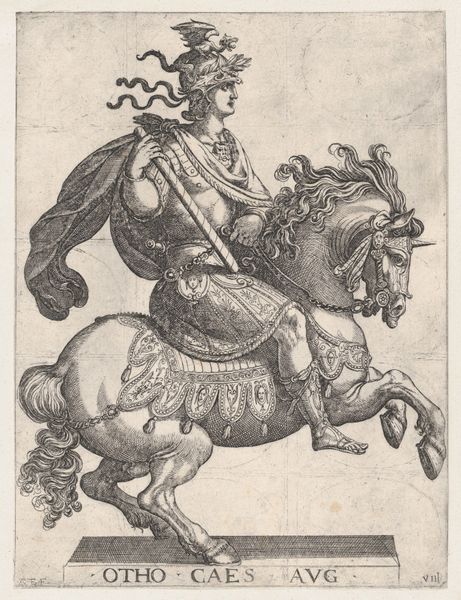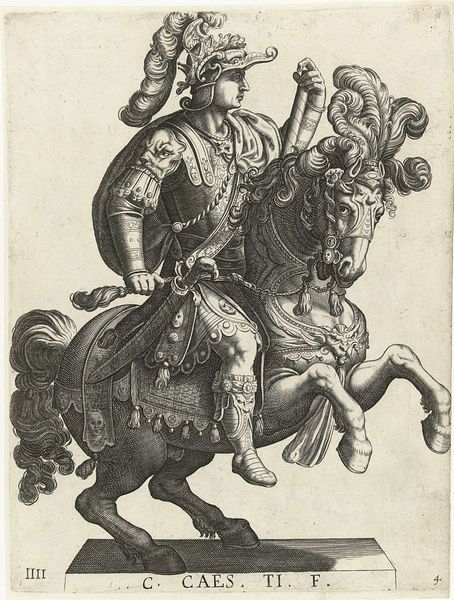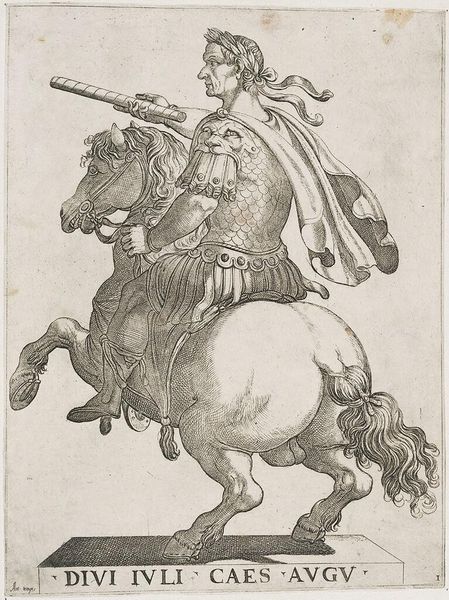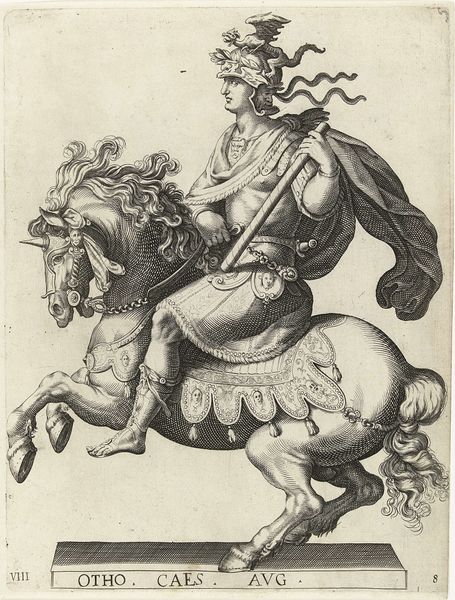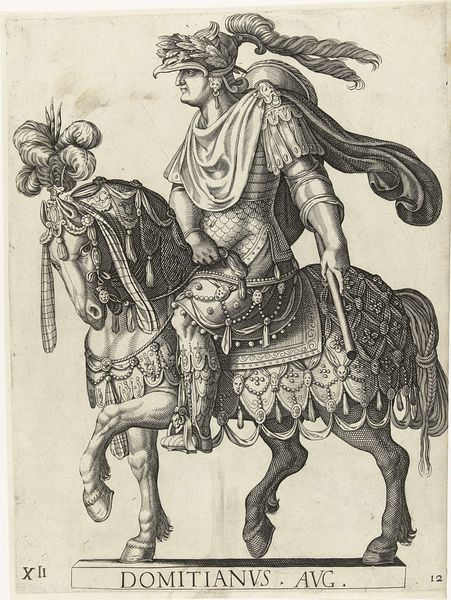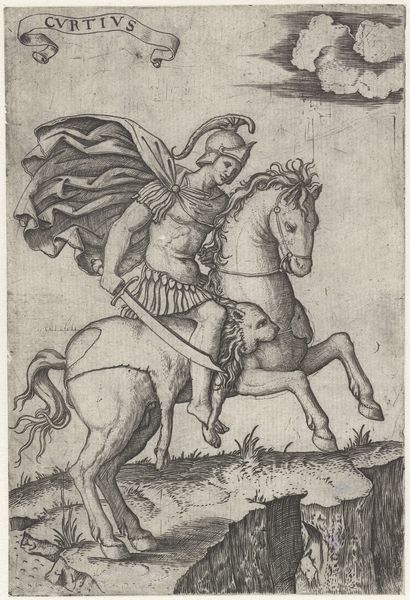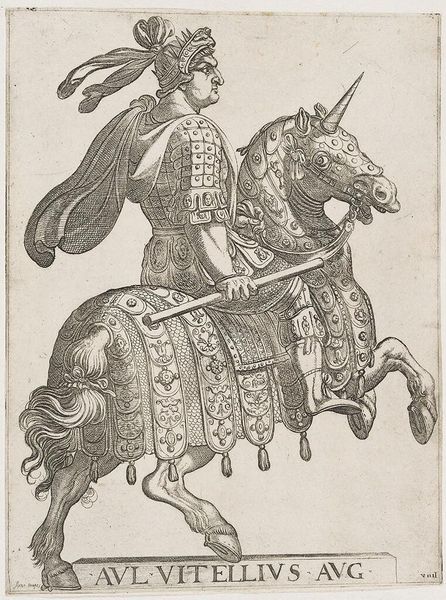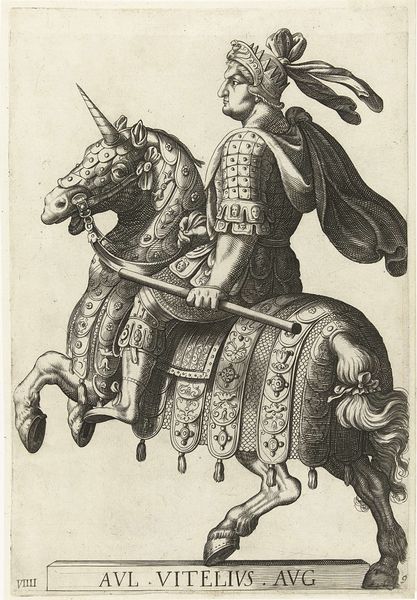
Plate 1: Emperor Julius Caesar on Horseback, from 'The First Twelve Roman Caesars' 1596
0:00
0:00
drawing, print, engraving
#
portrait
#
drawing
# print
#
mannerism
#
figuration
#
line
#
history-painting
#
italian-renaissance
#
engraving
Dimensions: Sheet: 11 7/8 × 8 7/8 in. (30.2 × 22.5 cm)
Copyright: Public Domain
Editor: So, this engraving from 1596, "Plate 1: Emperor Julius Caesar on Horseback" by Antonio Tempesta. I’m immediately struck by the detail – it’s incredible, especially the horse’s musculature and Caesar’s armor. But beyond the artistic skill, how do you read a work like this within its historical context? Curator: Well, this image, part of a series, taps into the enduring fascination with Roman power and leadership during the Renaissance. These images weren't just historical documents; they actively shaped perceptions of authority. Consider, how does Tempesta's Caesar, visually, embody ideals of Renaissance rulers? Editor: I see what you mean! His figure, the horse…they project strength, certainly. The details feel almost hyper-realistic, mythologizing the man at the same time. Is that typical for imagery like this? Curator: Exactly. These prints circulated widely. By showing Caesar as strong, decisive, and divinely appointed ("DIVI IVLI CAES AVG" is clearly visible), Tempesta reinforces the desired qualities of leadership but also connects them to established powers and empires that are historically relevant to Italy. Who do you think he might be alluding to and how would this influence the politics of imagery? Editor: Hmm, maybe he is comparing past with current rule. I wonder if his choices of imagery serve some socio-political agenda in 16th century Italy? Curator: That’s precisely what these types of art can embody. The production, consumption, and the symbolism can lead to different theories about what statement the piece conveys. Editor: I never thought about an artwork in that kind of context. It definitely puts a new spin on just looking at the beauty of it. Curator: Absolutely! It highlights how art serves as both a product of and a contributor to the cultural and political landscape of its time. We come to the art as beautiful first and then the context gives the image substance. Editor: Wow, it’s like peeling back the layers of an onion! Curator: Precisely! Now, what other historical imageries have you studied that can compare to "Plate 1"? Editor: So much to consider, so little time! Thanks!
Comments
No comments
Be the first to comment and join the conversation on the ultimate creative platform.
